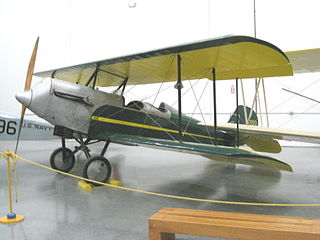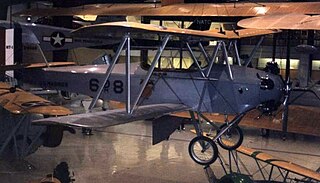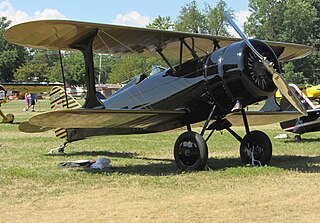Beechcraft is a brand of Textron Aviation since 2014. Originally, it was a brand of Beech Aircraft Corporation, an American manufacturer of general aviation, commercial, and military aircraft, ranging from light single-engined aircraft to twin-engined turboprop transports, business jets, and military trainers. Beech later became a division of Raytheon and then Hawker Beechcraft before a bankruptcy sale turned its assets over to Textron.

The Travel Air Manufacturing Company was an aircraft manufacturer established in Wichita, Kansas, United States in January 1925 by Clyde Cessna, Walter Beech, and Lloyd Stearman.

Keystone Aircraft Corporation was an early American airplane manufacturer. Headquartered in Bristol, Pennsylvania, it was formed as "Ogdensburg Aeroway Corp" in 1920 by Thomas Huff and Elliot Daland, but its name was quickly changed to "Huff-Daland Aero Corp", then to "Huff-Daland Aero Company". The company made a name for itself in agricultural aircraft, and then in the United States Army Air Corps' early bomber aircraft. From 1924, James McDonnell was the chief designer.

Clyde Vernon Cessna was an American aircraft designer, aviator, and early aviation entrepreneur. He is best known as the principal founder of the Cessna Aircraft Corporation.
Lloyd Carlton Stearman was an American aviator, aircraft designer, and early aviation entrepreneur.

Walter Herschel Beech was an American aviator and early aviation entrepreneur who co-founded the Beech Aircraft Company in 1932 with his wife, Olive Ann Beech, and a team of three others.

The Barkley-Grow Aircraft Corporation was a US aircraft manufacturer established by Archiebald St Clair Barkley and Captain Harold Barkley Grow in Detroit in 1936 to produce a small civil transport which incorporated Barkley's patented wing design, the Barkley-Grow T8P-1.

Monocoupe Aircraft is a type of small light airplanes originally produced in the late 1920s and 30s. The company was famous for introducing relatively inexpensive, compact, convenient, sporty, and efficient flying to the light plane market. In an era of large, expensive, open-cockpit biplanes, the Monocoupe was the first popular, compact, enclosed-cabin, two-seat, light plane in the United States. As a result, the Monocoupe soon became one of the most popular and successful brands of airplanes in American air races of the 1920s and 1930s.
The Cox-Klemin Aircraft Corporation was an American aircraft manufacturer based in Long Island, New York in the 1920s.
International Aircraft Corporation was an American 1920s aircraft manufacturer located in Ancor near Newtown, Ohio.

The American Eagle Aircraft Corporation was an American aircraft design and manufacturing company which existed briefly in Kansas, but which was a victim of the Great Depression, after building some 500 light airplanes, many of which were the Model A-129, a design attributed to noted aviation pioneer Giuseppe Mario Bellanca.

The New Standard D-29 was a trainer aircraft produced in the US from 1929 to 1930. It was a conventional biplane design with a fuselage constructed from duralumin members riveted and bolted together, and the wings were made with spruce spars and bass-wood and plywood built-up ribs. Deliberately built to be rugged and simple the D-29 was moderately successful, but had to compete with the Swallow TP.

EDO Aircraft Corporation was an American aircraft manufacturing company known primarily for manufacturing pontoons for floatplanes.

The American Eagle A-129 was a 1920s biplane built in the U.S.A.
The Columbia Aircraft Corporation was an American aircraft manufacturer, which was active between 1927 and 1947.

The Swallow Airplane Swallow is an American-built general purpose biplane of the mid to late 1920s.
Emil Matthew Laird was a pioneering American aircraft builder, pilot, and businessman. He put the first commercial aircraft into production at his E. M. Laird Aviation Company.

E. M. Laird Airplane Company was an American aircraft manufacturer of commercial aircraft and custom race planes.
The history of Wichita details the history of Wichita, Kansas from its initial settlement in the 1860s to the present day.













